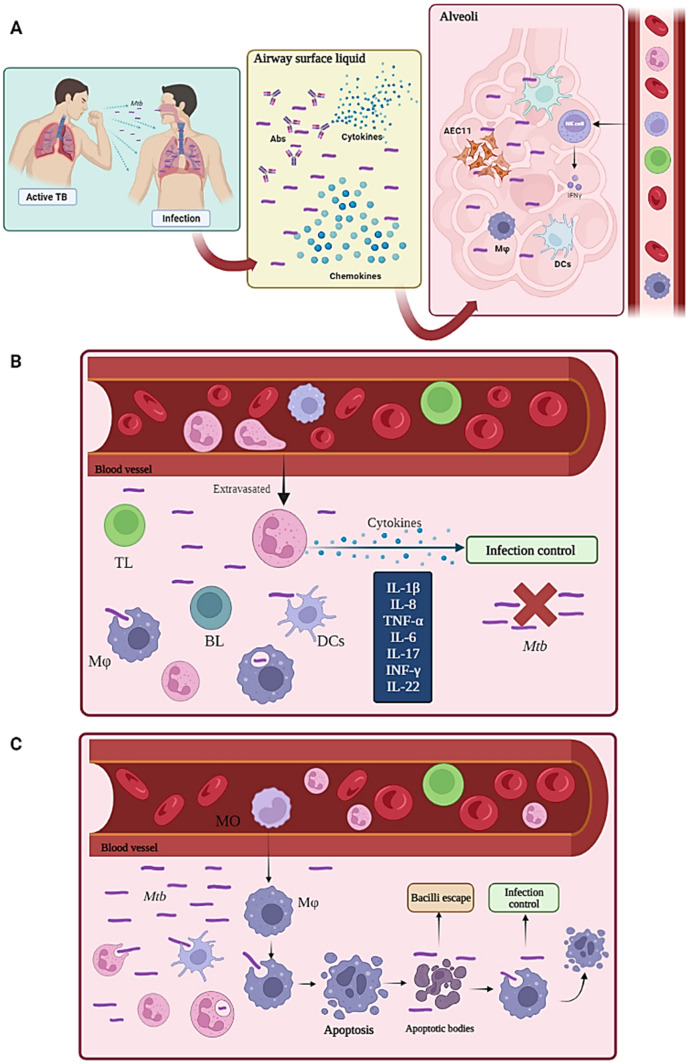Fig. 2.
Innate immune response. A Mtb enters a host when patients having active TB inhale microdroplets which reach the bronchial trees where it then comes into contact with the respiratory mucosa; this is coated by airway surface liquid (ASL), containing antimycobacterial peptides, immunoglobulins, cytokines and chemokines. The microorganism can escape from the respiratory mucosa and reach alveoli made up by type II epithelial cells (AECII), macrophages (MA) and dendritic cells (DCs). Natural killer (NK) cells mediate cell cytotoxicity through IL-2-induced degranulation and cytokine signalling, such as IFN-γ. B An innate immune response is mediated by neutrophils (N) which produce cytokines that control Mtb infection. C Monocytes (MO) differentiate into macrophages (Mφ) which produce apoptotic bodies (apoptosis) promoting the escape of the bacillus, whilst other macrophages phagocytose it and control the infection. Figure created using Biorender.com

